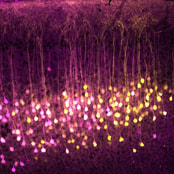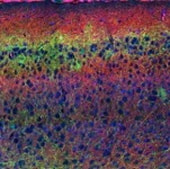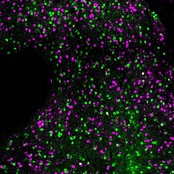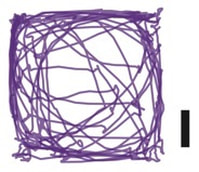|
We study the organization and function of the prefrontal cortex (PFC),
nucleus accumbens (NAc), higher-order thalamus, and related brain regions. |
|
Long-range circuits
How do the PFC, NAc and thalamus process their diverse long-range inputs? How do different types of afferents contact and drive specific populations of excitatory and inhibitory cells? We study these networks using a combination of slice electrophysiology, 2-photon microscopy, and optogenetics. |
|
Local circuits
How do different cell types communicate with each other in the PFC and NAc? How do interneurons contact and inhibit projection neurons to shape circuit dynamics? We study these networks with electrophysiology and conditional optogenetics, taking advantage of transgenics and viruses to target specific populations of cells. |
|
Neuromodulation
Which dopamine and other receptors are expressed by different excitatory and inhibitory cells? How do modulators influence intrinsic and synaptic properties to shape network activity? We engage specific modulatory pathways with conditional optogenetics, and assess receptors with selective pharmacology. |
|
Experience-dependent plasticity
How are local and long-range circuits rewired by rewarding and aversive experiences? How does synaptic plasticity depend on specific cell types and synapses? We use freely moving behavior followed by slice experiments to study how exposure to drugs of abuse and threat-related conditioning rewire specific networks. |
|
Motivated behavior
How are different types of neurons, connections and networks engaged by both rewarding and aversive stimuli? How are these functional responses affected by overall level of arousal and ongoing neuromodulation? We assess the function of different local and long-range circuits by combining in vivo optogenetics with 2-photon microscopy, photometry, and silicon probe recordings. |



